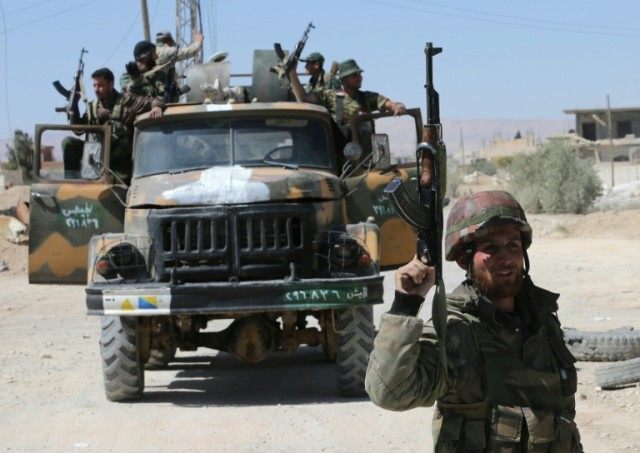Damascus (AFP) – Some 250 Syrians were missing and feared kidnapped on Thursday after the Islamic State group attacked a cement factory in an advance against government positions east of Damascus.
The jihadists launched the offensive after suffering a series of setbacks at the hands of regime troops in recent weeks including the loss of the ancient city of Palmyra, which officials said residents would start returning to on Saturday.
The fresh fighting came ahead of a new round of peace talks due next week in Geneva following a ceasefire between the regime and non-jihadist rebels that has allowed Syrian forces to focus on fighting IS.
After being pushed out of Palmyra on March 27, IS launched the fresh assault this week near the town of Dmeir, some 50 kilometres (30 miles) east of Damascus.
Residents said IS attacked the cement factory outside the town on Monday and that about 250 employees had gone missing.
“We haven’t been able to reach our family members since noon on Monday after an attack by Daesh on the factory,” said one resident of Dmeir, using an Arabic acronym for IS.
“We have no information about where they are.”
An administrator at the plant confirmed that 250 employees had been unreachable since Monday.
Dmeir is divided between IS control in the east and rebel control in the west, but several key positions around it, including a military airport and a power plant, are still in government hands.
The Syrian Observatory for Human Rights, a Britain-based monitor, said the fighting was heavy but the jihadists had not managed to gain significant ground.
“The most violent clashes are near the airport and the power plant, but IS has not entered either yet,” Observatory director Rami Abdel Rahman said.
IS had seized five regime positions in the area, including two checkpoints, since Monday, he said, adding that 20 members of regime forces and 35 IS fighters had been killed in the clashes.
– Palmyra residents return –
A Dmeir resident told AFP on Thursday that she could hear heavy shelling around the city and that residents were not daring to leave their homes.
“We’re in the eastern neighbourhood. The situation is very tense here,” she said, asking not to be named out of fear for her safety.
“We have no electricity, we have no water. There are people fleeing from the eastern districts to the west,” she said.
Last month’s fierce street battles in Palmyra left much of the city’s residential neighbourhoods severely damaged.
Most of Palmyra’s pre-war population of 70,000 people fled west towards the city of Homs when the extremist group advanced on the city in May 2015.
Syrian officials in Homs city were this week preparing for the first of these displaced residents to return.
“The first group of buses transporting residents back to Palmyra will leave on Saturday (from Homs). The residents started to register their names today,” a provincial government official told AFP.
He said nearly 45 percent of residential neighbourhoods in the city had been destroyed by the recent round of fighting.
Many apartment blocks had partially collapsed walls and some had been totally demolished, AFP journalists who visited the city after its recapture reported.
– Talks ‘doomed’ –
Authorities this week began restoring power lines in the city and repairs to housing began on Wednesday, provincial governor Talal Barazi told state news agency SANA.
An estimated 15,000 residents stayed on under IS rule and most left during the Syrian army’s offensive to retake the city, but it was not clear to where they had fled.
Since Syria’s conflict erupted in March 2011, thousands of people have gone missing — many of them arbitrarily arrested by armed forces — across the country.
More than 270,000 people have been killed and millions have fled their homes.
UN-backed peace talks to bring an end to the conflict are set to resume next week in Geneva, with this third round focusing on plans for a political transition.
The key stumbling block remains the fate of President Bashar al-Assad.
Syria’s opposition has clung to its years-long demand that he leave power immediately, but the government has refused.
This week the main opposition group, the High Negotiations Committee, said the upcoming negotiations were certain to fail unless Assad’s fate is on the table.
“If negotiations did not address the fate of Assad, it would be a waste of time and doomed to failure,” HNC representative Riad Naasan Agha said Tuesday at a forum hosted by Al-Jazeera in Qatar.
Agha said that he was not hopeful the talks would succeed, as negotiations on forming a transitional government were almost at a “dead-end”.

COMMENTS
Please let us know if you're having issues with commenting.